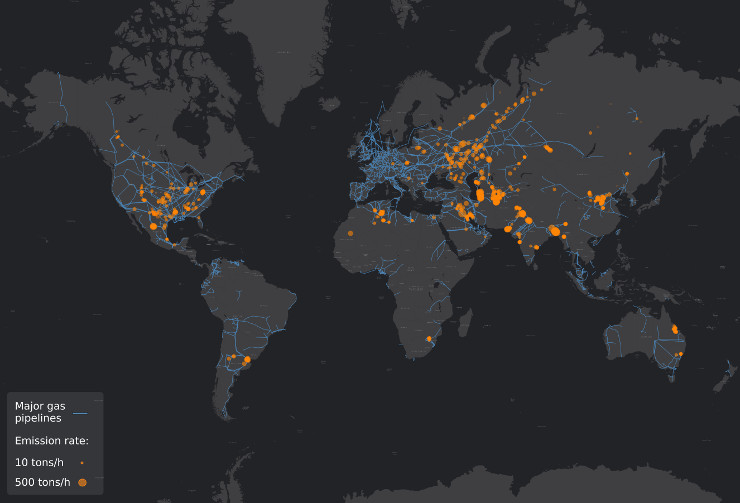Global oil and gas production now accounts for one quarter of all anthropogenic methane emissions.
These emissions have increased considerably in the last twenty years, due in particular to the increase in gas production.
A number of recent studies warn that methane emissions from the oil and gas industry have been largely underestimated in the international reports of the United Nations Framework Convention on Climate Change (UNFCCC). Indeed, these reports do not take into account methane emissions associated with very large leaks from maintenance practices or the upkeep of pipeline networks, which are mostly intentional but can also be accidental.
To address this, a Franco-American team led by the LSCE wanted to estimate the amount of methane released into the atmosphere by the oil and gas sectors. They therefore conducted a detailed analysis of thousands of images – more precisely, spectrometric measurements of atmospheric CH4 – produced daily for two years by the European Space Agency's Sentinel-5P satellite, which also measures pollutants. Only "leaks" exceeding the detection limit of the instrument could be detected. Although they often surpass 25 metric tons of methane per hour, they represent only a fraction of unreported emissions.
The scientists identified around 1,200 large methane "leaks" (or "ultra-emitters") over the course of the two years. This number may seem small, but the cumulative volume is very large. The extra cost in terms of lost production and climate impact is in the billions of dollars, and has the same carbon footprint as 20 million vehicles over the course of one year!
According to the study, unreported ultra-emitters would add more than 10% of the official oil and gas methane emissions from the six major producing countries to the atmosphere.
"Satellites now offer the possibility to track unreported ultra-emitters, opening the way for their monitoring," says Thomas Lauvaux, author of the study and a CNRS researcher with the French Make Our Planet Great Again program at the LSCE. "The cost of these operations is very modest in comparison to the expected benefit, which is in the billions of dollars."
The researchers also plan to study methane emissions from coal mining and agricultural activities, using higher resolution satellite data such as from Sentinel-2. These data should increase the global and daily coverage provided by Sentinel-5P for monitoring unwanted emissions.

Map showing the locations of major gas pipelines and major sources of methane emissions associated with the oil and gas industry. © Kayrros Inc., Esri, HERE, Garmin, FAO, NOAA, USGS, OpenStreetMap contributors, and the GIS User Community.
Click here to read the press release.